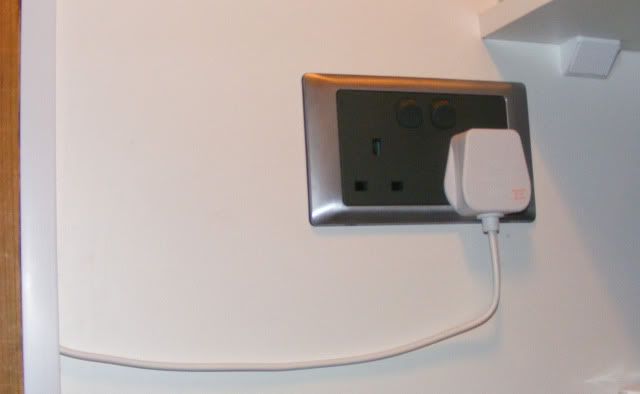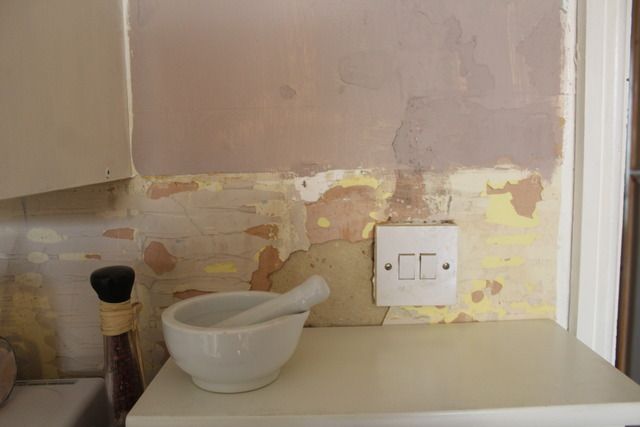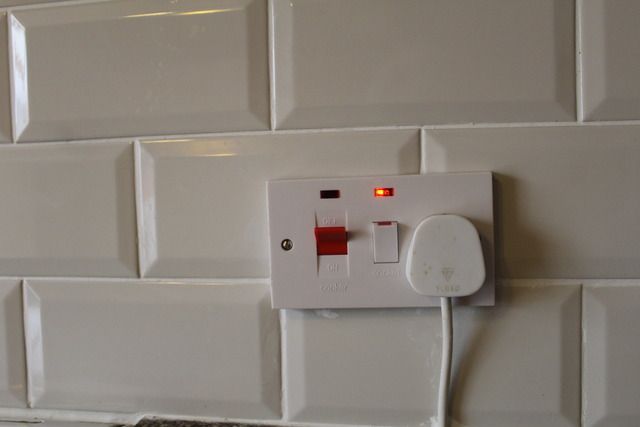- Location
- New Jersey
- Occupation
- Journeyman Electrician (retired)
Just curious how do they recess electrical boxes across the pond?
I didn't know what it was used for. Wayne has kindly explained.To be blunt, what are you having trouble with? Do you not understand how it works or do you find it to be another silly American thing?
Here the size for a standard light switch or single gang power socket is about 84mm by 84mm (about 3.3 inches). For multigang units the width vaties but the height stays the same. The boxes set into the wall are a few mm smaller so the fixtire covers them and there is no need for anything like a mud ring.If the latter, what do y'all use over there? Here, the 4 square box with mudring is the method used in 98% of commercial wiring.

Usually cut a hole in the plaster. The fitting is slightly larger than the box so the box is hidden. Nothing to be concealed.Just curious how do they recess electrical boxes across the pond?


We have those, too. What you are calling the fitting is two pieces over here, a device and a faceplate (could also be called a trim ring). Looks like some of your fittings may be of two-piece design also., but the last pictured appears to be of one-piece design.Usually cut a hole in the plaster. The fitting is slightly larger than the box so the box is hidden. Nothing to be concealed.
...
Usually cut a hole in the plaster. The fitting is slightly larger than the box so the box is hidden. Nothing to be concealed.
The boxes are in standard sizes and take standard fittings. Switches, power sockets etc.
We redecorated our kitchen a few months ago.
Before:

The later version:

The fitting comes with a USB port but the important thing for me was that it fits in the same recessed box as the old unit. No mud ring filler required.
Perhaps this goes some way to explain why I had difficulty in grasping the concept.
Ignorant Brit again.........
Mud ring?
They are not two piece.We have those, too. What you are calling the fitting is two pieces over here, a device and a faceplate (could also be called a trim ring). Looks like some of your fittings may be of two-piece design also., but the last pictured appears to be of one-piece design.
That was a cooker outlet and a single socket.We also have single gang boxes that don't require a plaster ring (mud ring).
The only parts I replaced were the surface fixings. No wiring, no boxes, no sheet rock, no mud rings.Our system is a little cheaper and easier to deal with when it comes to repair because all the individual parts can be replaced without spending lots of money on materials.
And yes, the terminals are large enough to tee off for other sockets. That's how ring mains are done. No wire nuts required.
One cable in. One cable out.If you did tee off and useing something similar to #12 GA you could soon be over box fill according to our rules.
Clear as mud!@Besoeker
Let me try......
As was mentioned, the "mud/plaster" rings are used mostly in commercial.
In residential, plastic boxes are the norm. When they are installed they are mounted so that about 1/2" is protruding out past the studs. (They are not flush with the studs)
This is so the drywall, that is 1/2" thick, will be flush with the box. It could also be 5/8" drywall.
In commercial, the boxes are not set protruding out past the studs. They are flush with the stud and are usually larger than single gang boxes, such as a 4" x 4" box. When the drywall is installed it would leave the box set back whatever the thickness of the drywall is and that is not allowed nor would it look good. So an appropriately sized mud ring is installed on the box. The opening of the mud ring that the device mounts to is now flush with the wall. The side flanges of the mud ring are covered by the drywall, leaving only the device opening showing.
The "mud or plaster" rings also come in more than a single gang size.
Maybe this will "un-mud" you some!
So far you've made that perfectly clear. :angel::lol:Clear as mud!
Yes yes......So far you've made that perfectly clear. :angel::lol:
Yes, that is what I understand is most common in wiring systems there, plus raceways are not so common especially in dwelling wiring. You probably don't have the box fill issue too often because it is normally one cable in and one out, here you can sometimes get one in and maybe four out - making the volume used up by the conductors an issue, or with raceway methods you may have conductors passing through that have nothing to do with switches or outlets installed in that box - yet they take up some space as well.One cable in. One cable out.
By raceway I assume you mean conduit or EMT. Not often used here.Yes, that is what I understand is most common in wiring systems there, plus raceways are not so common especially in dwelling wiring. You probably don't have the box fill issue too often because it is normally one cable in and one out, here you can sometimes get one in and maybe four out - making the volume used up by the conductors an issue, or with raceway methods you may have conductors passing through that have nothing to do with switches or outlets installed in that box - yet they take up some space as well.
By raceway I assume you mean conduit or EMT. Not often used here.
